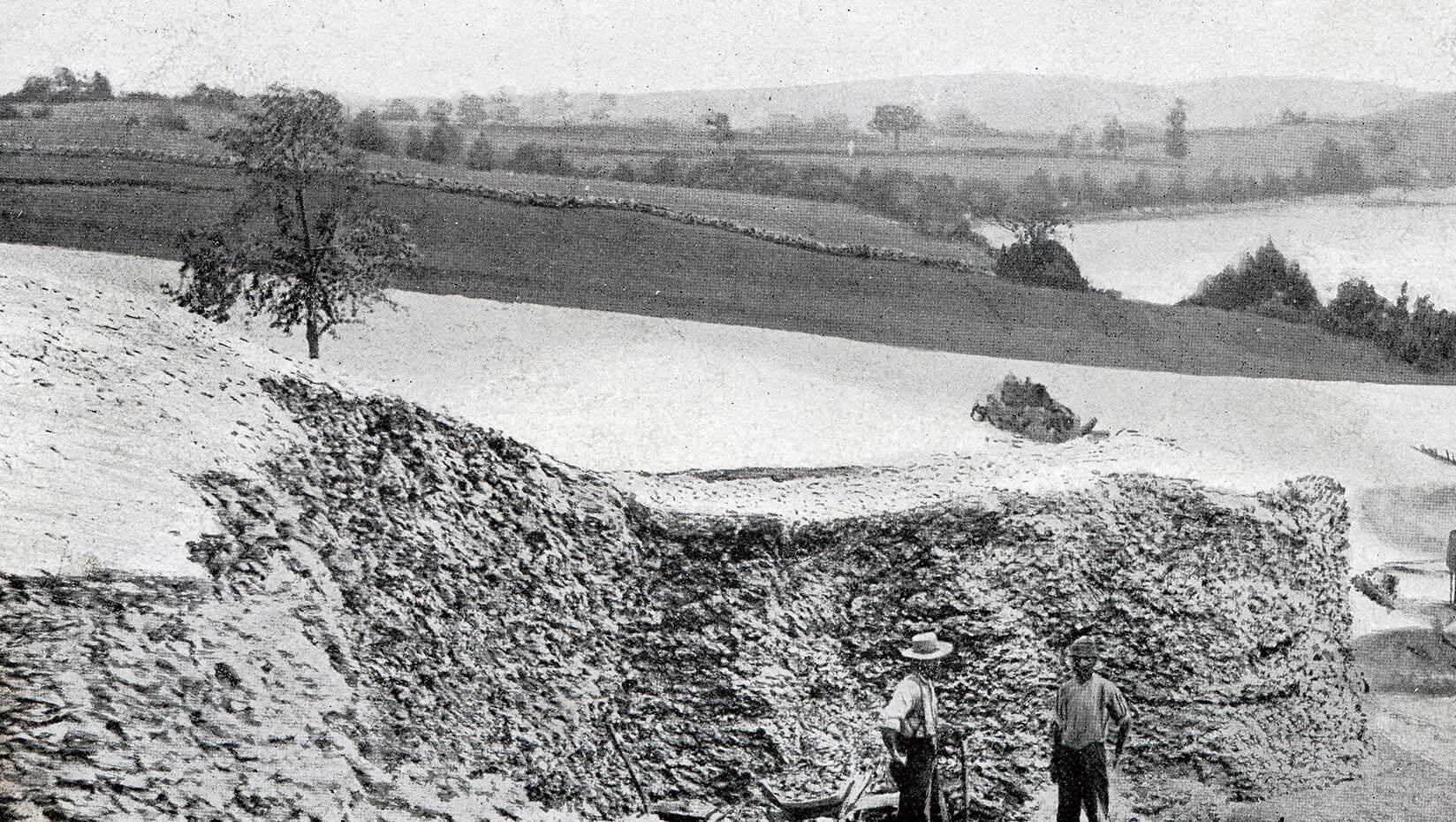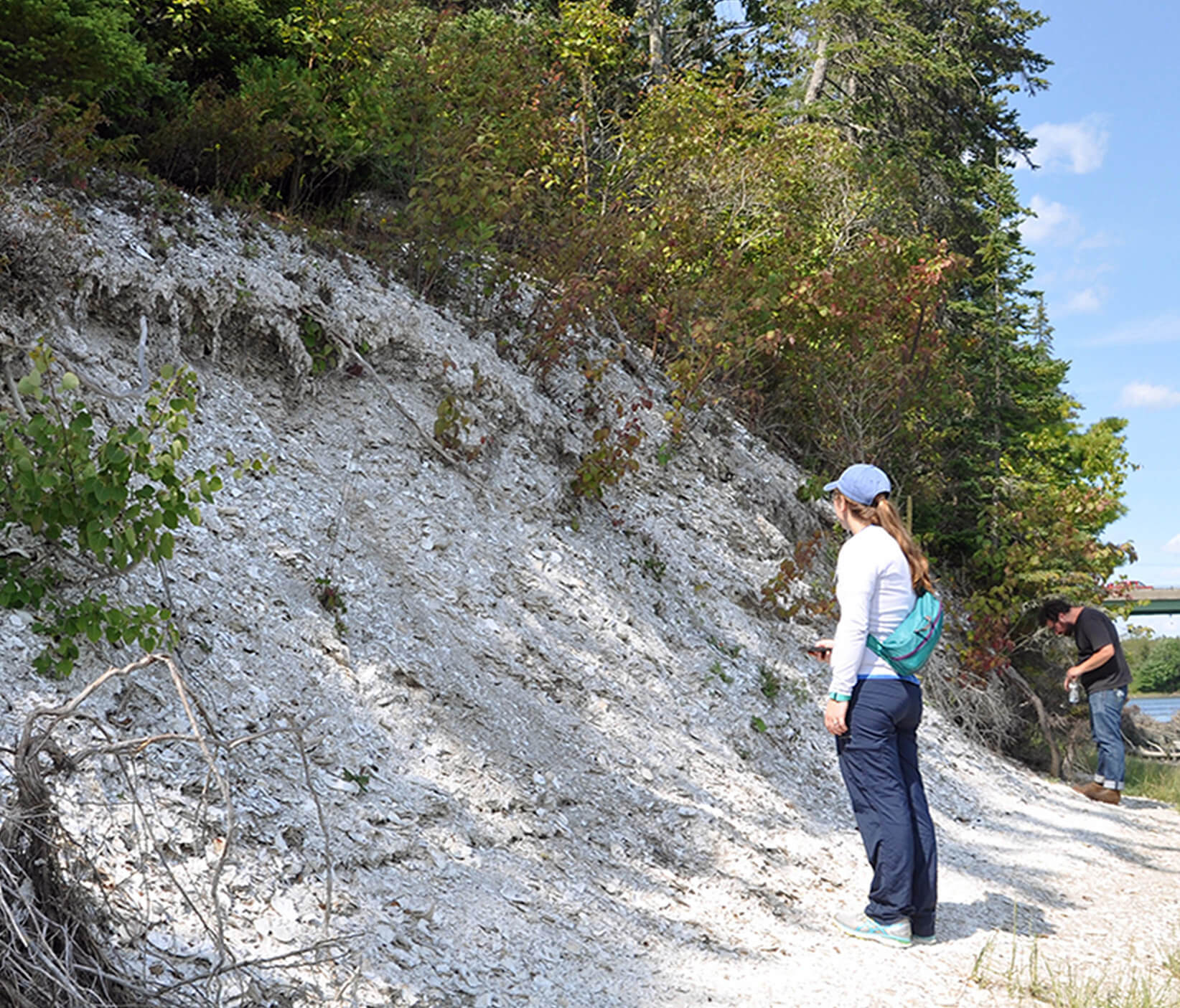
Exhibit highlights threatened shell middens containing Wabanaki, environmental history
For generations, indigenous Wabanaki people hunted, caught fish, and harvested clams and oysters along the coast of what’s now called Maine. And they left behind middens — heaps of shells — that sometimes contain tools, ceramic shards and bones of animals.
Alice Kelley and Bonnie Newsom are in a race against time and tides to document the cultural and paleoenvironmental information contained in the shell heaps before they’re swept out to sea.
While some people once considered the middens to be trash heaps, Kelley says they’re important keys to the past. And some middens, she thinks, may represent intentional building of highly visible landmarks.
Kelley, an associate research professor with the University of Maine Climate Change Institute and School of Earth and Climate Sciences, says the 2,000 or so middens on the Maine coast range in age from about 4,000 years old up to the time of European settlement.
The materials in the middens provide opportunities to learn about the lifeways of the indigenous people who created them, including what they ate and how they interacted with the environment and with each other.
Kelley and Newsom, an assistant professor in the UMaine Department of Anthropology, are among those who want to seize those opportunities to learn.
But as the rate of sea level rise increases and storms increase in intensity, waves as well as looters have taken, and are taking, a toll on these cultural archives.
Coastal erosion associated with sea level rise has destroyed all but a few sites older than 4,000 years old, says Kelley.
To help spread the word about the critical situation, Kelley and colleagues have created a museum exhibit. “Maine’s Threatened Shell Middens: Losing a Link to Understanding our Past” is on display until spring in the Minsky Culture Lab in the Hudson Museum at the Collins Center for the Arts.
The exhibit combines photographs and historic postcards with descriptive text, and a VEMI Lab re-creation of a canoe trip 1,500 years ago up the Damariscotta River between the famous Whaleback and Glidden middens.
Today, only a portion of the Glidden Midden, the largest on the East Coast north of Georgia, survives. Comprised mostly of oyster shells, it was about 150 meters (492 feet) long by 70 meters (230 feet) wide by about 9 meters (26 feet) deep. But it has experienced significant erosion.

People can visit the remnants of the Whaleback Midden at the Whaleback State Historic Site in Damariscotta. Before the midden was nearly destroyed by mining to make chicken feed and lime (to build Fort William Henry in Bristol) in the 1880s, it was about 104 meters (341 feet) long and 37 meters (121 feet) wide and 5 meters (16 feet) deep.
Large middens were once common, but Kelley says they’ve either disappeared beneath major coastal cities, including New York City and Baltimore, or they’ve eroded or been mined.
Exposed shells on middens’ eroded faces give them their whitish color. The layers of whole, single and broken shells are mixed with soil, organic matter and archaeological material.
Middens are important to archaeologists because the weathering of shells buffers Maine’s typically acidic soils. This preserves the organic materials — including bones and seeds — that disappear in archaeological sites in other areas of the state.
This preservation allows investigators to reconstruct people’s diets and tool technology, as well as past environmental conditions.
Some exhibit photos show the step-by-step process of archeological excavation, including midden layers and recovered artifacts. Others show looted and collapsing sites. Looting, or collecting, destroys middens by making them more susceptible to erosion, and removing material that can provide important information.
The exhibit also is an invitation, a plea really, for people to join the volunteer Maine Midden Minders, says Kelley. This citizen science effort was established with funding from the University of Maine Maine Sea Grant and the Senator George J. Mitchell Center for Sustainability Solutions, with support from the Maine Historic Preservation Commission.
The more people working to salvage the valuable history contained in the middens, the better. “The rate of erosion and scale of what is being lost is unbelievable,” Kelley says.
Kelley, colleagues and current volunteers are swiftly documenting as much information as possible contained in the remaining middens.
Midden minders photograph sites with their smartphones, measure erosion with simple tools, document any exposed archaeological materials and add their findings to a ready-made database that’s valuable for researchers and cultural resource managers. Some midden minders visit sites after each storm to assess and document damage.
Kelley and Newsom welcome additional archaeology, history and environmental buffs to join the effort. “Cultural heritage is being lost to the sea, “says Kelley. “We need to get the word out.”
The exhibit is free and open to the public. Hudson Museum hours are from 9 a.m. to 4 p.m. Monday through Friday.
To learn more about shell middens and Kelley’s research, read the UMaine Today magazine story “Lost to the Sea” and visit the Maine Midden Minders website.
Contact: Beth Staples, 207.581.3777, beth.staples@maine.edu
